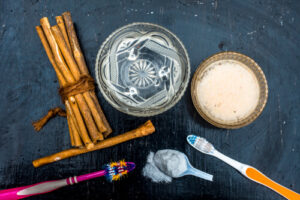In today’s world, where synthetic treatments often overshadow traditional remedies, many return to their roots, seeking solace in nature. Natural medicine for tooth pain stands out as a prime example. With the pain of a throbbing tooth being nearly unbearable at times, it’s heartening to know that nature provides solutions that are effective and gentle on the body. Whether you’re skeptical about mainstream dental treatments or simply curious about holistic alternatives, diving into the realm of natural medicine for tooth pain can be a journey worth taking.
Traditional methods used across different cultures
Throughout history, diverse cultures have developed unique methods for diagnosing, treating, and preventing ailments. While the specifics of these practices vary widely, many are rooted in a profound understanding of the human body, environment, and the intricate interplay between the two. Here’s a brief overview of some traditional healing practices from various corners of the globe:
1. Ayurveda (India):
Originating in ancient India, Ayurveda is one of the world’s oldest holistic healing systems. It’s based on the belief that health and wellness depend on a delicate balance between the mind, body, and spirit. Key practices include herbal treatments, diet, meditation, and yoga.
2. Traditional Chinese Medicine (TCM):
With its roots dating back thousands of years, TCM encompasses a range of practices like acupuncture, herbal medicine, and qigong. Central to TCM is the concept of ‘Qi’ (vital energy) and the balance of the Yin and Yang forces.
 3. Native American Healing:
3. Native American Healing:
Indigenous tribes of North America have a rich tradition of using herbs, animal parts, and rituals for healing. Sweat lodges, for instance, are used both for purification and to promote healing. Spiritual leaders or shamans play a crucial role in this tradition.
4. African Traditional Medicine:
Across the African continent, healing methods vary widely but often blend spiritual and herbal elements. Rituals, community dances, and the use of various plants play a vital role. Diviners or traditional healers often act as intermediaries between the spiritual and physical realms.
5. Curanderismo (Latin America):
Originating in Mexico and other parts of Central and South America, Curanderismo is a holistic healing approach that mixes Native American, Spanish, and African traditions. Curanderos (healers) use herbs, massages, and rituals to cure ailments and ward off evil spirits.
6. Jamu (Indonesia):
Jamu is a traditional Indonesian medicine made predominantly from natural ingredients, including roots, bark, flowers, seeds, and fruits. It’s been used for over a millennium to address a variety of ailments, from digestive issues to skincare.
7. Sowa-Rigpa (Tibet):
Also known as the Tibetan science of healing, it combines aspects of Ayurveda and Buddhism. The practice involves herbal medicine, dietary guidance, and various spiritual practices.
The rise of natural medicine in modern times
Over the past few decades, the global healthcare landscape has been a palpable shift. The pendulum is swinging back from a once dominant pharmaceutical-driven approach to a more integrative one that values and embraces natural medicine. But what’s driving this resurgence in age-old healing practices in our modern era? Let’s explore.
1. Distrust of Big Pharma:
Several high-profile controversies surrounding pharmaceutical companies, from questionable ethics to the opioid crisis, have caused some to become wary. This has led to an increased demand for alternative and more transparent health solutions.
2. Holistic Wellness Movement:
There’s a growing understanding that health is not merely the absence of disease. The holistic wellness movement emphasizes the interconnectedness of mind, body, and spirit, leading many to natural medicine’s doors, which often espouses similar principles.
3. Cultural Globalization:
With the world becoming more interconnected, knowledge about traditional healing practices from various cultures, such as Ayurveda, Traditional Chinese Medicine, and herbal African remedies, has become more accessible. Many adopt these practices, intrigued by their long-standing history and holistic approach.
4. Concern Over Side Effects:
Synthetic medications can have side effects, some of which may be severe. On the other hand, natural remedies are often perceived as gentler, leading individuals to explore them as first-line treatments or complementary therapies.
5. Sustainability and Environmental Concerns:
Natural medicine often aligns better with environmental sustainability, relying on renewable resources like herbs instead of synthetic methods that might involve environmentally harmful processes.
6. Personal Empowerment in Health:
Modern technology, especially the internet, has democratized access to information. Empowered by knowledge, individuals are now taking a more active role in their health decisions, researching and seeking out natural remedies that resonate with them.
Popular Natural Remedies for Toothaches
Tooth pain can be unbearable, but before the advent of modern dentistry, people turned to nature to find relief. Many of these natural remedies have been handed down through generations and are still used in various cultures around the world today. Here are some popular natural remedies for toothaches:
 1. Clove Oil:
1. Clove Oil:
Derived from the clove plant, clove oil is widely recognized for its pain-relieving properties. Eugenol, its primary component, acts as a natural anesthetic. A few drops or a dab of clove oil can be applied using a cotton ball or directly to the affected tooth or gum area for relief.
2. Saltwater Rinse:
A simple yet effective solution, a saltwater rinse can help clean out infections and reduce inflammation. Swishing warm salt water in the mouth can dislodge bits of stuck food and act as a natural disinfectant for minor oral wounds.
3. Turmeric Paste:
Turmeric is known for its anti-inflammatory and antibacterial properties. Making a paste of turmeric powder with a bit of warm water and applying it to the sore spot can provide relief and reduce swelling.
4. Garlic:
Garlic has been used for its medicinal properties for thousands of years. Crushing a garlic clove and placing it on the affected tooth or chewing it can help alleviate pain. Allicin, an active compound in garlic, provides antimicrobial effects.
5. Cold Compress:
Applying a cold compress or ice wrapped in a thin cloth to the face for 15-minute intervals can help reduce inflammation and numb the area, providing temporary relief from dental pain.
6. Peppermint Tea Bags:
Peppermint has numbing properties that can soothe sensitive gums. A used tea bag can be placed in the freezer for a couple of minutes and then applied to the affected area.
7. Guava Leaves:
Used in traditional medicine in many cultures, chewing on fresh guava leaves or using a mouthwash made from boiled guava leaves can help reduce inflammation and pain due to their anti-inflammatory and antimicrobial properties.
8. Aloe Vera:
The gel from the aloe vera plant can be applied to the painful area. It has natural anti-inflammatory properties that can soothe and relieve pain and gum inflammation.
It’s important to remember that while these remedies can provide temporary relief, they aren’t permanent solutions for underlying dental problems. Persistent or severe toothaches should be addressed by a dentist to diagnose the root cause and ensure appropriate treatment.
Incorporating Natural Medicine into Your Dental Routine
A proactive approach to dental health can stave off many common oral issues. Natural ingredients, many of which have been utilized for centuries in various cultures, can play a significant role in preventive dental care. Here are some measures that harness the power of natural ingredients to maintain oral health:
1. Oil Pulling with Coconut Oil:
Originating from Indian Ayurvedic medicine, oil pulling involves swishing a tablespoon of oil (typically coconut, sesame, or sunflower oil) in the mouth for about 15-20 minutes and then spitting it out. This practice can reduce harmful bacteria in the mouth, freshen your breath, and improve gum health.
2. Herbal Mouthwashes:
Herbs like sage, chamomile, and peppermint can be used to create natural mouthwashes. Their antimicrobial properties can help establish pain relief, combat bacteria, and leave the mouth feeling fresh.
3. Green Tea:
Regularly consuming green tea can be beneficial due to its natural fluoride content and antioxidants. These help in fighting harmful bacteria, preventing toothache pain and reducing the risk of cavities.
4. Xylitol Chewing Gum:
Xylitol, a natural sugar alcohol, can inhibit the growth of Streptococcus mutans, a primary bacteria responsible for tooth decay. Chewing gum with xylitol can promote saliva production and reduce the acidic environment in the mouth.
5. Neem Stick Toothbrush:
Used in various parts of Asia, especially the Indian subcontinent, the twigs of the neem tree can be chewed and used as a natural toothbrush. The antimicrobial properties of neem can help in reducing plaque and bacterial growth.
6. Turmeric Gel:
Turmeric, renowned for its anti-inflammatory properties, can be made into a gel or paste and applied to the gums to prevent inflammation and gum diseases.
7. Dietary Adjustments:
A diet rich in crunchy vegetables (like carrots and celery) and foods high in calcium and phosphorus (like cheese, almonds, and leafy greens) can naturally help in cleaning teeth and strengthening the enamel.
 8. Baking Soda:
8. Baking Soda:
Used occasionally, baking soda can serve as a natural toothpaste due to its abrasive nature, helping to remove surface stains and neutralize harmful mouth acids.
9. Aloe Vera Gel:
Regularly applying aloe vera gel can help in combating gum inflammation and is soothing for any minor irritations in the mouth.
While these natural measures can assist in maintaining good oral health, they are most effective when combined with a robust dental hygiene routine that includes regular brushing, flossing, and periodic dental check-ups. Always consult with a dental professional before introducing any new treatments or remedies into your oral care routine.
References:
11 Home and Natural Remedies for Toothache Pain
https://www.healthline.com/health/dental-and-oral-health/home-remedies-for-toothache
How to treat a toothache at home
https://www.medicalnewstoday.com/articles/320315
At-Home Remedies for Toothache Pain
https://www.verywellhealth.com/natural-remedies-for-toothache-89359
10 natural remedies for a tooth infection
https://www.guardiandirect.com/dental-care/10-natural-remedies-tooth-infection
Toothache Home Remedies
https://www.webmd.com/oral-health/home-remedies-toothache
10 Effective Home Remedies For Toothache Pain
https://www.forbes.com/health/dental/tooth-pain-remedies/


